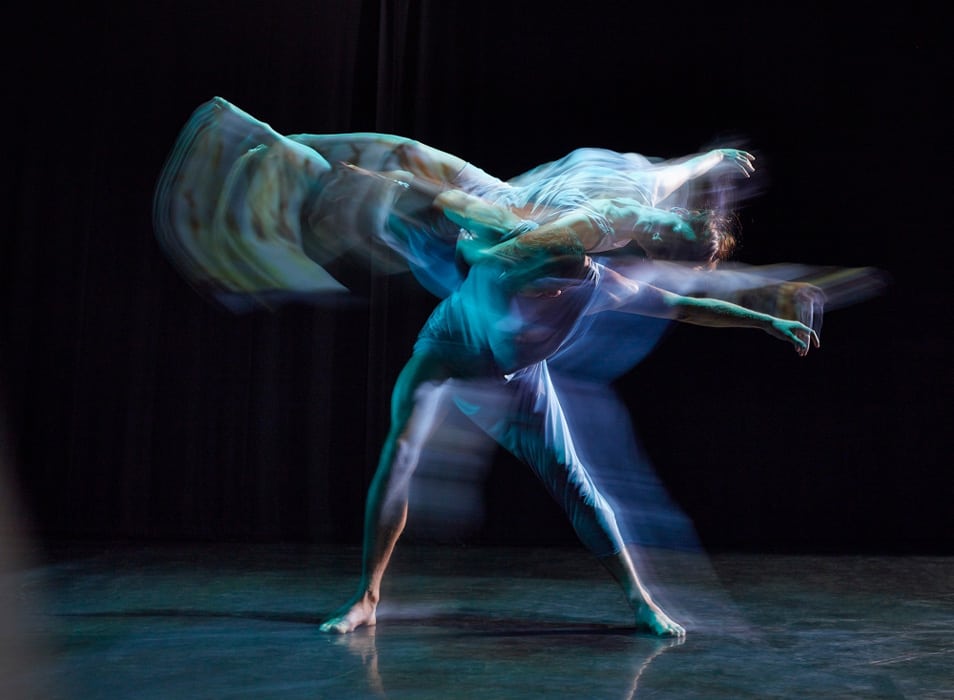Ultimate Release
Perhaps not since Mikhail Fokine’s 1905 iconic “The Dying Swan” has there been as haunting a solo dance depiction of avian death as Aakash Odedra Company’s “Songs of the Bulbul” (2024).
Continue Reading
World-class review of ballet and dance.
Russell Maliphant’s latest mixed bill is an ode to the art of stage lighting and its uncanny power to charge a performance atmospherically. Under the direction of award-winning designer Michael Hull, the scenic ether of “Still Current” transforms from frantic to serene, intense to halcyon, the performers roving their way through shadowy pathways and flickering swathes of luminosity in search of something brighter. That’s not to say the dancing takes a back seat in this performance, however. The movement on display here is lovingly crafted and consciously centred, drawing its vigour from within and pitching it outwards to electric effect.
Performance
Place
Words

Russell Maliphant's “Still Current.” Photograph by Warren du Preez and Nick Thornton Jones


“Uncommonly intelligent, substantial coverage.”
Your weekly source for world-class dance reviews, interviews, articles, and more.
Already a paid subscriber? Login
Perhaps not since Mikhail Fokine’s 1905 iconic “The Dying Swan” has there been as haunting a solo dance depiction of avian death as Aakash Odedra Company’s “Songs of the Bulbul” (2024).
Continue ReadingDance, at its best, captures nuance particularly well, allowing us to feel deeply and purely. In its wordlessness, it places a primal reliance on movement and embodied knowledge as communication all its own. It can speak directly from the body to the heart, bypassing the brain’s drive to “make sense of.”
Continue Reading“Racines”—meaning roots—stands as the counterbalance to “Giselle,” the two ballets opening the Paris Opera Ballet’s season this year.
Continue Reading“Giselle” is a ballet cut in two: day and night, the earth of peasants and vine workers set against the pale netherworld of the Wilis, spirits of young women betrayed in love. Between these two realms opens a tragic dramatic fracture—the spectacular and disheartening death of Giselle.
Continue Reading
comments